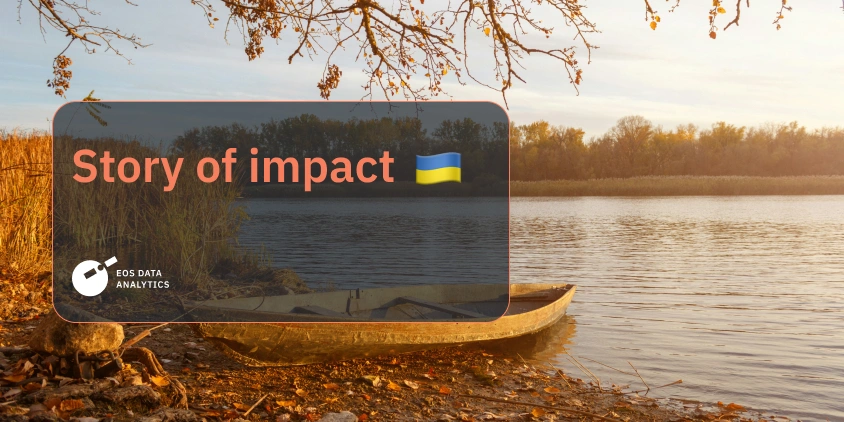
Life After Kakhovka Dam Destruction: A New Beginning
The destruction of the Kakhovka Dam in June 2023 triggered one of the most severe environmental disasters in Ukraine’s history. The loss of the reservoir not only reshaped the region’s landscape but also jeopardized ecosystems, water supply, and the livelihoods of local communities. However, one year later, remarkable changes have begun to emerge: a third of the former reservoir is now covered by willow forests, and wildlife from the surrounding steppes has started returning to the area. We are witnessing a globally unique phenomenon — the birth of a new ecosystem in what was once the historic Great Meadow (Velykyi Luh).
At EOS Data Analytics, we believe that satellite technology can play a crucial role in studying these transformations. As part of this story of impact, we analyzed satellite imagery of the disaster’s aftermath and spoke with leading ecologists about the region’s future. What became clear is that we all have a critical role to play at this stage — if we come together and refuse to remain indifferent.
The Great Meadow – A Submerged Natural Gem
Once upon a time, along the banks of the Dnipro River, one of Ukraine’s greatest natural treasures flourished — the Great Meadow (Velykyi Luh). This vast landscape was crisscrossed by numerous rivers, their tributaries, and wetlands, overgrown with dense forests, reeds, and cattails. Before it was submerged by the waters of the Kakhovka Reservoir, the area spanned 100,000 hectares and was home to hundreds of endemic plant and animal species .
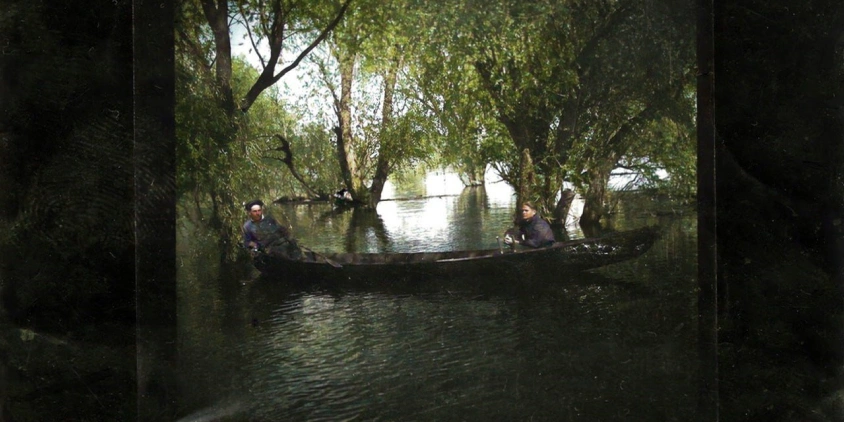
In addition to its ecological significance, the Great Meadow held immense cultural value for local communities. It served as a refuge for the Zaporozhian Cossacks and was the site of historical landmarks, such as the city of Zamyk, the capital of Khan Mamai . A detailed report on the history of the Great Meadow was published by the Texty.org.ua team in early 2024 .
Although the creation of the Kakhovka Reservoir displaced 37,000 people, forcing them to relocate, the memory of the Great Meadow has endured . Many modern researchers continue to preserve and revive its history, and the destruction of the Kakhovka Dam has only drawn more attention to this once-lost gem.
A Brief History Of The Kakhovka Reservoir
In the mid-20th century, Soviet authorities devised an ambitious plan to stimulate economic growth in southern Ukraine. Central to this plan was the creation of the Kakhovka Reservoir, a key component of the Dnipro Hydroelectric Cascade, which aimed to improve navigational conditions, irrigate farmland, and generate electricity for the region’s industrial needs.
On September 20, 1950, the Council of Ministers of the USSR and the Central Committee of the Communist Party approved the construction of the Kakhovka Hydroelectric Power Plant, necessitating the creation of Ukraine’s largest reservoir . The resulting reservoir covered an area of 2,155 square kilometers and held 18.2 cubic kilometers of water.
The project provided a stable water supply for southern Ukraine and Crimea, which was vital for agriculture in the region’s arid climate. The Kakhovka Reservoir enabled the development of irrigation systems that boosted crop yields and expanded the area of arable land. Additionally, the hydroelectric power plant met the industrial energy needs of Ukraine’s southern regions.
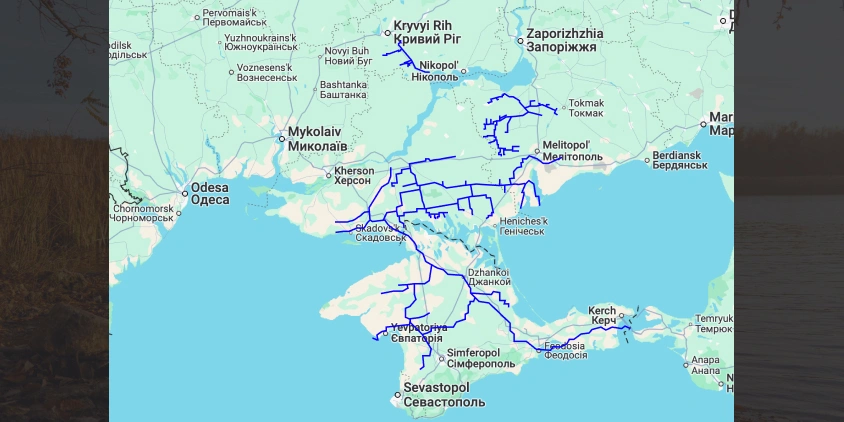
However, as the Ukrainian saying goes, “Great water brings great harm.” Indeed, the creation of the Kakhovka Reservoir led to the destruction of the region’s biodiversity. Ninety settlements, both rural and urban, were submerged beneath its waters .
Moreover, the Soviet project failed to account for potential climate changes and environmental risks. Just a few years after the reservoir’s formation, the region experienced issues with waterlogging, shoreline erosion, and silt buildup, all of which diminished the reservoir’s effectiveness .
Nevertheless, over the decades, as Ukraine gained its independence and deepened its national identity, the Kakhovka Reservoir became an inseparable part of the country’s image for new generations of Ukrainians.
The Destruction Of The Kakhovka Dam
On the morning of June 6, 2023, Russian forces blew up the Kakhovka Hydroelectric Power Plant. Water began draining rapidly from the reservoir and surrounding areas. Over 1,000 square kilometers of the reservoir’s bed were exposed, and groundwater levels, which were essential for irrigating the region’s farmlands, dropped significantly.
The destruction of the dam severely affected national nature parks, including Kamianska Sich and the Great Meadow (Velykyi Luh). Toxic substances from the reservoir contaminated the water, while the southern regions of Ukraine and Crimea faced a growing shortage of water resources .
This event marked one of the most catastrophic environmental disasters in Ukraine’s history and is now the subject of extensive research by both Ukrainian and international organizations and scientists.
According to a study published in Water International, critical levels of pollutants were detected in the waters of the Dnipro-Buzka estuary and the northwestern part of the Black Sea. In particular, concentrations of copper (17.9 μg/l) and zinc (44.8 μg/l) near Odesa significantly exceeded acceptable levels, along with a high concentration of petroleum products (0.10 μg/l). This contamination will have long-term detrimental effects on marine life, particularly on reproductive capacity and biological processes .
The EOS Data Analytics team has also conducted extensive research into the aftermath of the Kakhovka Dam explosion.
A Satellite View Of The Great Meadow
Satellites capture images of Earth every day, regardless of borders or restrictions, making space-based analytics an essential tool for assessing environmental situations on a broader scale.
In the summer of 2024, EOS Data Analytics scientists conducted a detailed study on the scale of the environmental disaster and its impact on the surrounding ecosystems.
The first insight provided by satellite images of the former reservoir region was the reduction of open water surface area by over 1,000 square kilometers, leading to the degradation of coastal systems and changes to the region’s hydrological balance. Viewing this from space offers a clear understanding of how it appears on the ground.
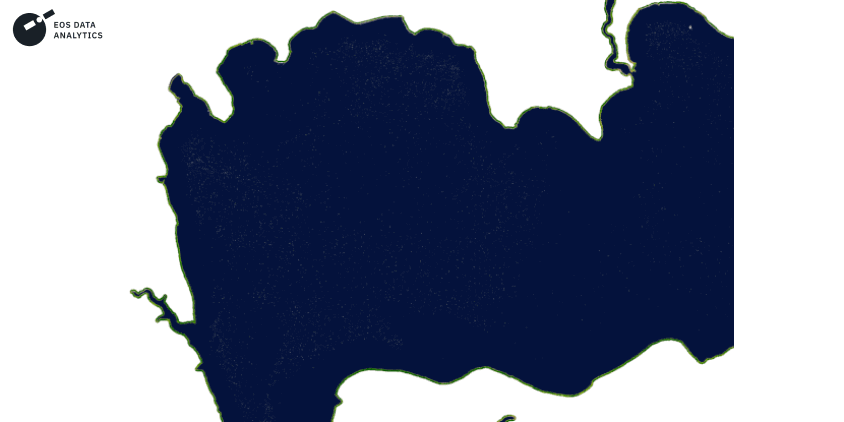
The reservoir’s drying out also caused a significant drop in soil moisture levels in the surrounding areas, resulting in salinization. Analysis of the changes in the NDVI and NDMI indicated a substantial deterioration in the condition of the vegetation cover, particularly in the steppe regions of Crimea and southern Ukraine. This suggests reduced agricultural productivity, which in turn will lead to significant economic losses.
Despite the reservoir’s destruction, the analysis revealed intriguing natural recovery processes. Satellite imagery of previously submerged areas showed the emergence of new plant cover. According to news reports, the former reservoir is rapidly being overgrown with willows and other tree species suited to such moist conditions. These intense growth patterns suggest that natural ecosystems have a substantial potential for long-term regeneration.
EOSDA scientists also focused on the cooling pond of the Zaporizhzhia Nuclear Power Plant, which relied on the Kakhovka Reservoir for water. Satellite images revealed that water levels in the pond dropped significantly after the dam’s destruction, posing a threat to the plant’s safe operation. Although the station is currently using alternative water sources, the situation remains critical and requires continuous monitoring.
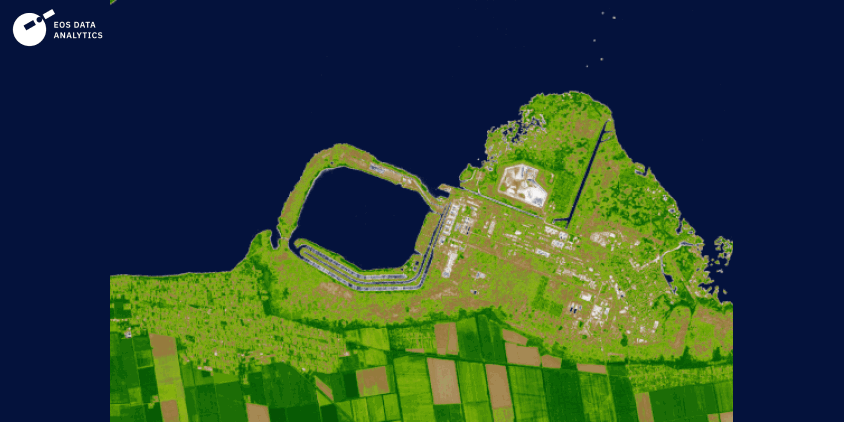
The final aspect of the study examined water levels in the North Crimean Canal, which supplied water to southern Ukraine and Crimea.
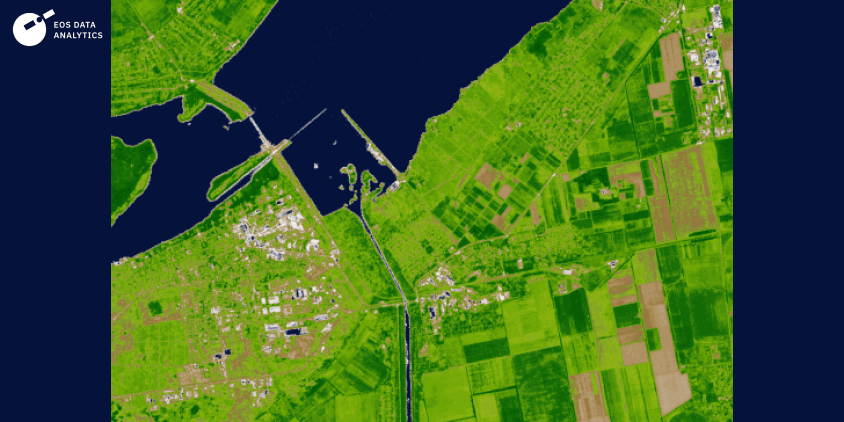
After the dam’s destruction, water levels in the canal significantly dropped, disrupting the irrigation systems that ensured crop yields across thousands of hectares of farmland. A year has passed, and the impact on agriculture is already visible in satellite images of the Crimean Peninsula.

As seen in satellite images of Crimea, this drying out is already leading to droughts, which will have long-term consequences for the region’s food security.
What’s Next: Is A New Dam Necessary?
To gain a broader understanding of the situation and explore potential solutions for the challenges that arose after the destruction of the Kakhovka Dam, we spoke with two renowned experts, each with a unique perspective on what should happen next.
Vadym Maniuk, Ph.D., a well-known ecologist, has not only been monitoring the aftermath of the disaster but has also visited the former reservoir several times. He believes that in 30 years, the area could become a full-fledged forest with oxbow lakes and channels, and the ecosystem could stabilize completely within 80 years.
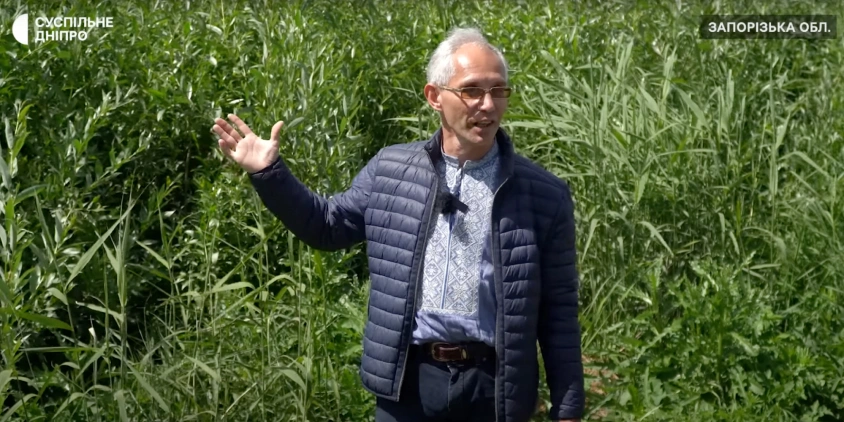
In our conversation, Maniuk shared his excitement about the rapid emergence of new ecosystems in the wake of the Kakhovka Sea’s destruction. Unlike the reservoir, which was quite poor in biodiversity, the region is now seeing the formation of ecosystems never before witnessed. Already, a third of the former reservoir’s area is covered with dense willow forests, and wild boars, roe deer, and hares are migrating into the region from the steppes. As these populations grow, so too will the region’s biodiversity.
Just imagine the scale of the ecosystem services the Great Meadow could provide — from large-scale carbon capture and oxygen production by forests to the region’s potential to supply fish and timber.
He emphasized that Ukrainians not only have a unique opportunity to study these natural regeneration processes but also bear the responsibility to protect and support them.
It’s important not to rush into infrastructure projects in the former reservoir area. Instead, we need to implement monitoring programs to track changes in biodiversity and assess the long-term prospects for preserving these new ecosystems.
Oleksii Angurets, an expert in ecology and sustainable development, focuses more on the issue of pollution in the area following the dam’s destruction.
He was part of the first group of researchers to study the sediment deposits left after the Kakhovka Dam was destroyed . Preliminary results indicate that pollution levels in Kherson and downstream areas were minimal. However, high concentrations of heavy metals and organic pollutants were found at urban beaches in Zaporizhzhia. Clearly, further studies are needed in other parts of the region to gain a fuller understanding of the disaster’s consequences, with decontamination being the first priority.

When it comes to restoring the reservoir, Angurets takes a more cautious stance. He believes that any solution to the Kakhovka Dam issue should be comprehensive, considering ecological, social, and economic factors.
For example, instead of restoring old irrigation systems, we could apply modern agricultural technologies like drip irrigation to make better use of the available water.
He also added that engineering solutions could be part of the answer, but they must be developed in a way that minimizes the impact on the newly forming ecosystems.
While Maniuk and Angurets have slightly different views, both experts agree that instead of rushing into plans for a new Kakhovka Dam, which would cost billions of euros, there needs to be a transparent dialogue between scientists, the government, and the public to ensure sustainable development in the region .
We can’t just turn back the clock. We need to consider the evolving needs of both nature and the people who depend on its resources.
The Future Of The Great Meadow Is In Our Hands
The destruction of the Kakhovka Dam stands as one of the most devastating environmental disasters of this century. While it failed to garner the attention it deserved from global political leaders, its consequences are severe and painful for both the region and Ukraine as a whole.
Yet, despite the tragedy, nature has shown an incredible ability to recover. Unique ecosystems are forming in the area where the reservoir once existed, and this is a miracle unfolding before our very eyes. It cannot be ignored. We must value these processes, monitor them, and protect them.
In our stories of impact, we often emphasize the importance of implementing sustainable conservation methods. The heroes of our stories are usually individuals and communities who are studying and actively changing the situation on the ground.
But the hero of this still-unfinished story could be each and every reader who cares about the future of the former reservoir. By offering support, you can help ensure the safe restoration of the region and the preservation of its biodiversity.
The Great Meadow deserves to become a symbol not only of nature’s rebirth but also of our ability to learn from our mistakes and do everything possible to protect our environment.
This Story of Impact was created following EOSDA’s vision to make space tech a global driver of sustainability on Earth. If you wish to share a story that relates to this idea and believe our solutions can help develop it, please contact us via pr@eosda.com.
About the author:
Maksym Sushchuk is at the forefront of realizing EOSDA's vision to make space tech a global driver of sustainability on Earth. He has over 15 years of experience in journalism and content creation for prominent Ukrainian startups, charitable funds and ESG businesses. As Head and Co-founder of PR Army Maxim brings attention to the human and social tolls of the aggression against Ukraine.
Recent articles
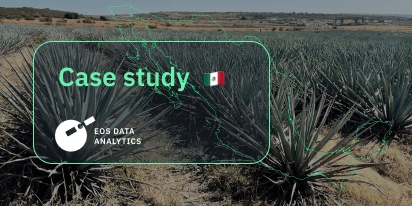
Digital Tools Improve Soil Health And Yields In Mexico
EOSDA and ITTA supported a Guanajuato farm with contour-line planning, monitoring tools, and practical guidance to reduce soil erosion and improve yields in the long run.

Analyze 2025 & Plan Your Best Year Yet: LandViewer Christmas Offer
It’s the most wonderful time of the year! The Christmas holidays are here, and so is your chance to analyze 2025 and plan a prosperous 2026 with more affordable Pro plans in LandViewer.

EOSDA Models Climate Change Impact On Sugarcane Yields
EOSDA modeled future temperature, rainfall, and other climate impacts on Veracruz sugarcane. The results help growers plan long-term adaptation strategies, including timing, varieties, and irrigation.